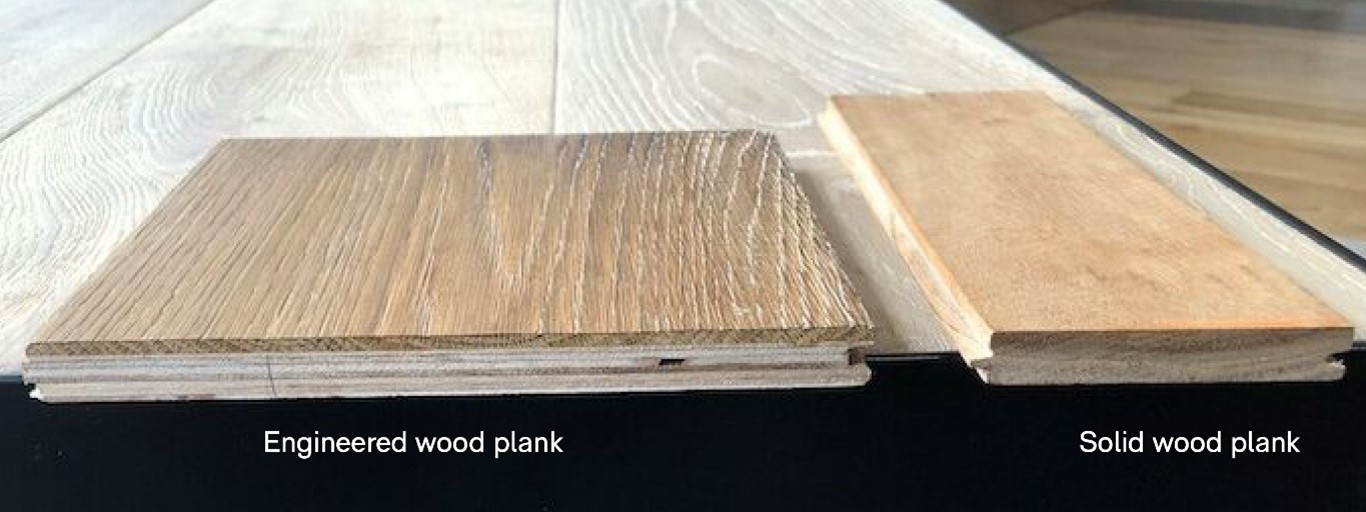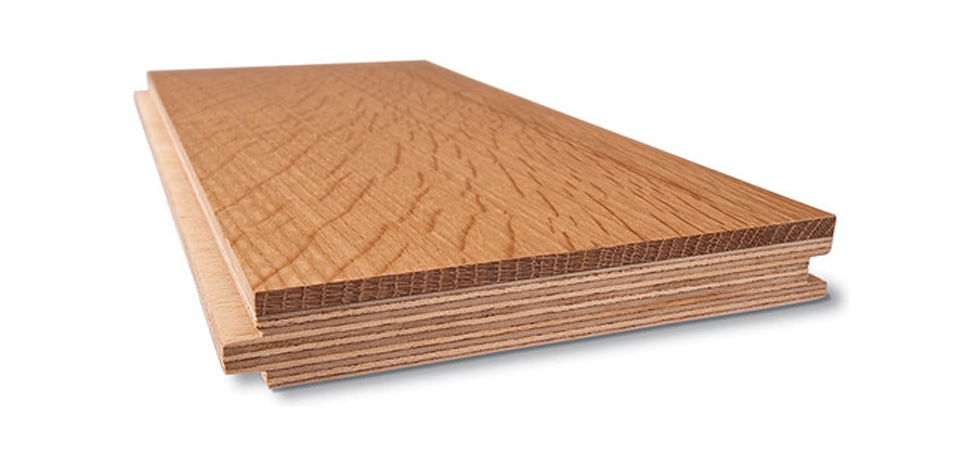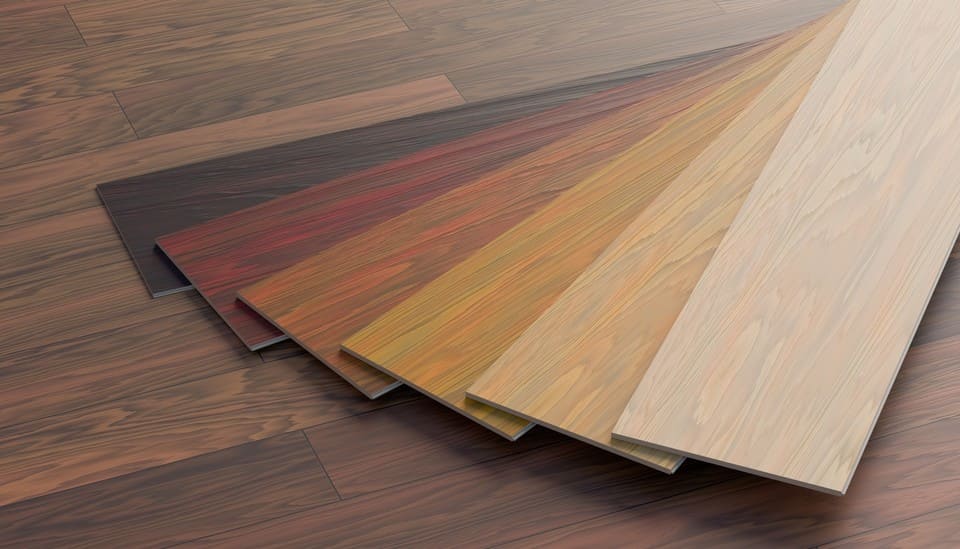Although engineered wood flooring has gained popularity as an alternative to traditional hardwood, it’s important to consider its disadvantages before making a decision. Engineered wood flooring is made from layers of plywood topped with a thin veneer of real wood, providing the appearance of hardwood at a lower cost. However, it does come with its fair share of drawbacks.
High Moisture Sensitivity
One of the main disadvantages of engineered wood flooring is its high sensitivity to moisture. While the plywood base provides stability, the real wood veneer is prone to warping and swelling when exposed to water or high humidity. This can lead to buckling and the need for costly repairs or replacement.
Limited Refinishing Options
Unlike solid hardwood flooring, engineered wood has a thin layer of real wood on top. As a result, it cannot be sanded and refinished as many times as solid wood floors. Once the veneer layer wears down, there is a limit to how many times it can be refinished, which may shorten the lifespan of the flooring.
Less Aesthetically Versatile
While engineered wood flooring can mimic the look of various hardwood species, it is still limited in terms of aesthetic options compared to solid wood. The thin veneer means that the natural variations and depth of character found in solid wood may be lacking. Additionally, engineered wood tends to have a more uniform appearance, which may not suit everyone’s preference.
Lower Longevity
Due to the thinner top layer and limited refinishing options, engineered wood flooring generally has a shorter lifespan compared to solid wood. In high-traffic areas or homes with pets, the veneer may show signs of wear and tear more quickly. This could result in the need for replacement sooner than expected.
While engineered wood flooring offers affordability and versatility, it’s important to consider the potential disadvantages. Its moisture sensitivity, limited refinishing options, aesthetic limitations, and lower longevity make it a less durable option compared to solid hardwood. Evaluating these factors in relation to your specific needs and budget will help you make an informed decision for your flooring choices.

Cost and Maintenance
Higher initial cost compared to laminate flooring
One of the disadvantages of engineered wood flooring is its higher initial cost compared to laminate flooring. While engineered wood offers the look and feel of real wood, it does come at a higher price point. This can make it less appealing for budget-conscious consumers who are looking for a more affordable flooring option. However, it is important to note that the higher cost is often justified by the longevity and quality that engineered wood provides.
Requires special care in maintenance
Another disadvantage of engineered wood flooring is that it requires special care in maintenance. Unlike laminate flooring or tiles, engineered wood is not as resistant to moisture and spills. It is important to immediately clean up any liquid spills to prevent damage to the wood veneer. Additionally, regular cleaning and maintenance, such as sweeping and using manufacturer-recommended cleaning products, are necessary to ensure the longevity and appearance of the flooring. Failure to properly maintain the flooring can result in warping, scratching, and other damages.
While engineered wood flooring offers the benefits of affordability and versatility, it does come with some disadvantages. The higher initial cost compared to laminate flooring may be a deterrent for budget-conscious consumers. Additionally, the need for special care in maintenance can require extra effort and attention. However, it is important to weigh these disadvantages against the benefits of the natural beauty and durability that engineered wood provides. Considering your specific needs, budget, and lifestyle will help you make an informed decision when choosing your flooring options.

Limited Lifespan and Durability
When considering flooring options, it is important to weigh the disadvantages as well. While engineered wood flooring offers affordability and versatility, it does come with certain drawbacks. One significant disadvantage is its limited lifespan compared to solid hardwood flooring.
Shorter lifespan compared to solid hardwood flooring
Engineered wood flooring consists of a thin layer of hardwood veneer on top of several layers of plywood or high-density fiberboard. While this design allows for greater stability, it also means that the lifespan of engineered wood flooring is shorter compared to solid hardwood. Over time, the top layer can wear down, and once it reaches a certain point, it cannot be sanded and refinished like solid wood flooring. This means you may need to consider replacing the entire floor sooner than you would with solid hardwood.
Susceptible to scratches, dents, and warping
Another disadvantage of engineered wood flooring is its susceptibility to scratches, dents, and warping. The thin top layer of hardwood is more vulnerable to these damages compared to solid wood. High-heeled shoes, pet claws, and furniture legs can all cause scratches and dents on the surface. Additionally, the plywood or fiberboard layers underneath are more prone to warping when exposed to moisture or significant changes in temperature. This means that areas with high humidity, such as bathrooms or basements, may not be suitable for engineered wood flooring.
It is important to note that proper maintenance and care can help mitigate these risks. Regularly cleaning the floor, using protective pads on furniture, and promptly wiping up spills can help maintain its appearance. However, it is crucial to acknowledge that compared to other flooring options, engineered wood does require more attention and potentially more frequent repairs or replacements.
While engineered wood flooring offers affordability and versatility, it is important to consider its potential drawbacks. Its shorter lifespan compared to solid hardwood flooring and its susceptibility to scratches, dents, and warping should be taken into account when making a flooring decision. Considering your lifestyle, budget, and the specific requirements of different areas in your home will help you make an informed choice.

Limited Refinishing Options
When considering flooring options, it’s important to weigh the disadvantages as well. While engineered wood flooring offers affordability and versatility, it does come with certain drawbacks. One significant disadvantage is its limited lifespan compared to solid hardwood flooring.
Limited number of times it can be refinished
Unlike solid hardwood flooring, engineered wood can only be refinished a limited number of times. This is because engineered wood consists of a thin layer of hardwood veneer on top of several layers of plywood or high-density fiberboard. Over time, the top layer can wear down, and once it reaches a certain point, it cannot be sanded and refinished like solid wood flooring. This means that if your engineered wood floors experience significant wear and tear, you may need to consider replacing the entire floor rather than refinishing it.
Cannot be sanded and refinished as many times as solid hardwood
Another drawback of engineered wood flooring is that it cannot be sanded and refinished as many times as solid hardwood. Since the top layer of engineered wood is thinner than solid wood, it cannot withstand the same level of sanding and refinishing. This is an important consideration if you anticipate heavy foot traffic or have a busy household, as it means that your engineered wood floors may not be able to be restored to their original beauty as many times.
Additionally, the thinner top layer of hardwood in engineered wood flooring is more susceptible to scratches and dents. High-heeled shoes, pet claws, and furniture legs can all cause damage to the surface. This can result in a worn and aged appearance over time, reducing the aesthetic appeal of your floors.
While engineered wood flooring offers affordability and versatility, it’s important to consider its potential drawbacks. The limited number of times it can be refinished and its susceptibility to scratches and dents should be taken into account when making a flooring decision. If you anticipate heavy wear and tear or want the option of refinishing your floors multiple times, solid hardwood flooring may be a more suitable choice. However, with proper maintenance and care, engineered wood flooring can still provide a durable and attractive flooring option for many households.

Moisture and Humidity Sensitivity
When considering flooring options, it’s important to weigh the disadvantages as well. While engineered wood flooring offers affordability and versatility, it does come with certain drawbacks. One significant disadvantage is its sensitivity to moisture and humidity.
Prone to Damage from Moisture and Humidity
Unlike solid hardwood flooring, engineered wood is more susceptible to damage from moisture and humidity. The top layer of hardwood veneer sits on multiple layers of plywood or high-density fiberboard, which can absorb moisture and swell. This can cause the engineered wood to warp, buckle, or even delaminate over time. Moisture and humidity in the environment, such as spills, leaks, or high levels of humidity, can lead to irreversible damage to the flooring.
Requires Proper Installation and Moisture Control Measures
To mitigate the risks associated with moisture and humidity sensitivity, proper installation and moisture control measures need to be in place for engineered wood flooring. It is essential to ensure that the subfloor is dry and level before installation to minimize the potential for moisture seeping into the flooring. Additionally, an appropriate moisture barrier, such as a vapor retarder, should be used to prevent moisture from entering the wood. Proper ventilation and climate control within the space can also help maintain optimal conditions for the flooring.
It is important to note that even with these precautionary measures, engineered wood flooring may still be more vulnerable to moisture-related issues compared to solid hardwood. Therefore, it is crucial to assess the environmental conditions of the space where the flooring will be installed and take necessary precautions accordingly.
While engineered wood flooring offers affordability and versatility, its sensitivity to moisture and humidity should be taken into consideration. It is crucial to undertake proper installation techniques and implement moisture control measures to minimize the risks of damage. However, if moisture-prone areas or high humidity levels are a concern, solid hardwood flooring may be a more suitable choice. It is essential to consult with professionals and evaluate the specific needs and conditions of the space to make an informed decision about the flooring options available.

Environmental Impact
When considering flooring options, it’s essential to weigh the disadvantages of engineered wood flooring. While this type of flooring offers affordability and versatility, it does come with certain drawbacks, particularly when it comes to its environmental impact.
Made from composite materials and adhesives
One significant aspect of engineered wood flooring that raises concerns is its composition. Engineered wood is made from multiple layers of plywood or high-density fiberboard, which are composite materials. These layers are then bonded together using adhesives. The use of composite materials and adhesives means that engineered wood flooring is not entirely natural or sustainable.
Questionable sustainability and environmental impact
The manufacturing process of engineered wood involves the use of energy and resources. The harvesting and processing of the components, including the adhesives and finishes, contribute to the overall carbon footprint. Additionally, the use of wood veneer for the top layer often involves selecting high-grade hardwood, which puts a strain on natural resources.
Furthermore, while engineered wood flooring can utilize wood from sustainable sources, there is still a concern about the overall sustainability and environmental impact of the product. The extraction and processing of the raw materials, as well as the energy-intensive manufacturing process, contribute to deforestation and pollution.
It is crucial to consider the lifespan and durability of engineered wood flooring when evaluating its environmental impact. While it may be more affordable upfront, if the flooring needs to be replaced more frequently compared to other options, such as solid hardwood, the overall environmental impact could be higher.
Despite these concerns, advancements have been made in the industry to improve the sustainability of engineered wood flooring. Some manufacturers offer products that use recycled or reclaimed wood and environmentally-friendly adhesives. These options provide a more sustainable choice for consumers concerned about the environmental impact.
While engineered wood flooring offers affordability and versatility, it is essential to consider its environmental impact. The use of composite materials and adhesives raises concerns about sustainability and the overall carbon footprint of the product. It is crucial for consumers to research and choose products from manufacturers that prioritize sustainability and offer environmentally-friendly options. Additionally, considering the lifespan and durability of the flooring can help minimize the environmental impact in the long run.
Conclusion
While engineered wood flooring offers affordability and versatility, it is important to consider its environmental impact. The use of composite materials and adhesives raises concerns about sustainability and the overall carbon footprint of the product. However, advancements have been made in the industry to improve the sustainability of engineered wood flooring. Manufacturers now offer products that utilize recycled or reclaimed wood and environmentally-friendly adhesives. These options provide a more sustainable choice for consumers who are concerned about the environmental impact.
Considerations before choosing engineered wood flooring
Before deciding to install engineered wood flooring, there are several considerations to keep in mind. Firstly, the composition of engineered wood flooring, with its multiple layers of composite materials and adhesives, means that it is not entirely natural or sustainable. This can be a concern for environmentally conscious individuals who prioritize eco-friendly products. Additionally, the manufacturing process of engineered wood flooring requires energy and resources, contributing to its overall carbon footprint. The extraction and processing of raw materials, as well as the energy-intensive manufacturing process, can contribute to deforestation and pollution.
Another important consideration is the lifespan and durability of engineered wood flooring. While it may be more affordable upfront, if the flooring needs to be replaced more frequently compared to other options, such as solid hardwood, the overall environmental impact could be higher. Taking into account the long-term durability and maintenance requirements can help in reducing the environmental impact.
Alternative flooring options to consider
For those concerned about the environmental impact of engineered wood flooring, there are alternative options to consider. One option is solid hardwood flooring, which is typically made from sustainably harvested trees and does not involve the use of composite materials or adhesives. Solid hardwood flooring has a long lifespan and can be refinished multiple times, reducing the need for replacement.
Another alternative is bamboo flooring, which is known for its sustainability. Bamboo is a fast-growing grass that can be harvested without harming the plant, making it an environmentally friendly choice. Additionally, bamboo flooring offers a similar look and feel to hardwood flooring.
Other eco-friendly flooring options include cork, linoleum, and recycled tile or stone. These materials are made from renewable or recycled resources and can be durable and aesthetically pleasing.
In conclusion, while engineered wood flooring offers affordability and versatility, it is important to consider its environmental impact. By researching and choosing products from manufacturers that prioritize sustainability and offer environmentally-friendly options, consumers can make a more conscious choice. Additionally, considering alternative flooring options like solid hardwood, bamboo, cork, linoleum, or recycled materials can help minimize the environmental impact in the long run.




